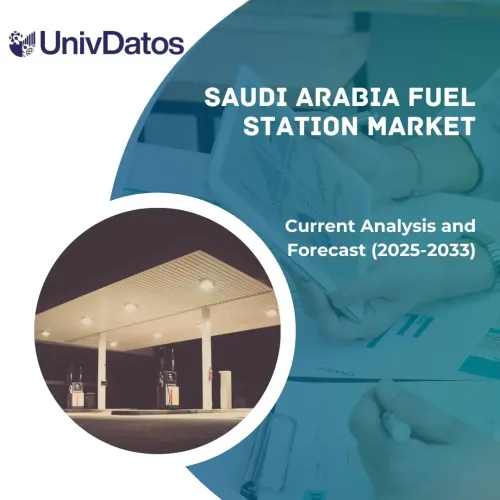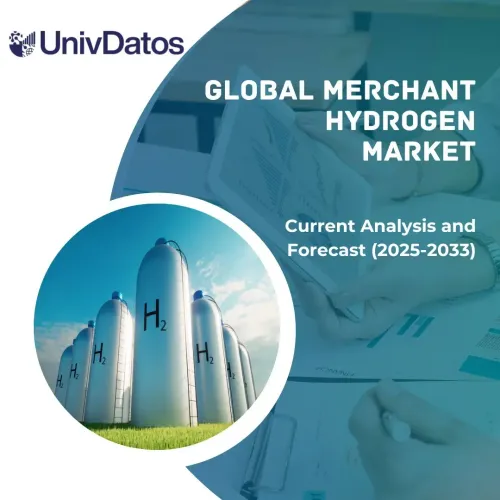Рынок систем контроля оксидов азота: текущий анализ и прогноз (2023-2030 гг.)
Упор на технологии (селективное каталитическое восстановление (SCR), селективное некаталитическое восстановление (SNCR), горелка с низким содержанием NOx и дожигание топлива); Применение (энергетика и электроэнергия, химическая промышленность, транспорт и промышленность); и Регион/Страна
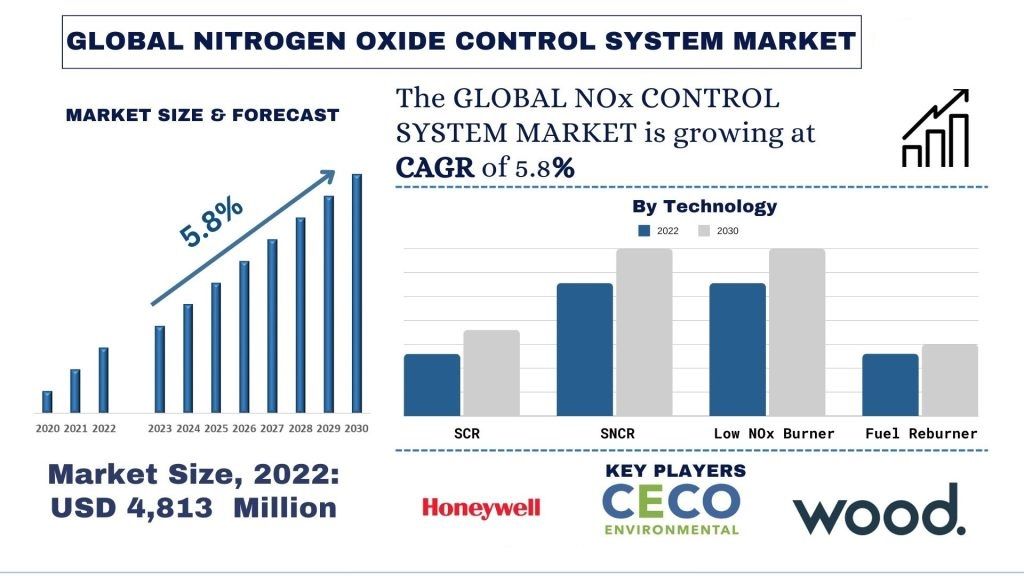
Размер и прогноз рынка систем контроля оксидов азота
Объем рынка систем контроля оксидов азота оценивался в 4 813 млн долларов США и, как ожидается, будет расти со среднегодовым темпом роста около 5,8% в течение прогнозируемого периода (2023-2030 гг.) из-за растущего дефицита воды.
Анализ рынка систем контроля оксидов азота
Оксиды азота (NOx) — это группа высокореактивных газов, являющихся основным источником загрязнения воздуха, способствующих образованию смога, кислотных дождей и приземного озона. Эти газы в основном выбрасываются при сжигании ископаемого топлива на электростанциях, промышленных предприятиях и транспортных средствах. Поскольку обеспокоенность по поводу качества воздуха и его воздействия на здоровье человека и окружающую среду продолжает расти, спрос на эффективные системы контроля оксидов азота быстро растет во всем мире. Кроме того, правительства во всем мире внедрили строгие стандарты выбросов, чтобы обуздать загрязнение воздуха и уменьшить воздействие оксидов азота на окружающую среду. Например, в феврале 2024 года Агентство по охране окружающей среды США (EPA) усилило Национальные стандарты качества окружающего воздуха (NAAQS) для NOx, ограничив их, с целью защиты своего населения от вредных и дорогостоящих последствий для здоровья, таких как сердечные приступы и преждевременные смерти.
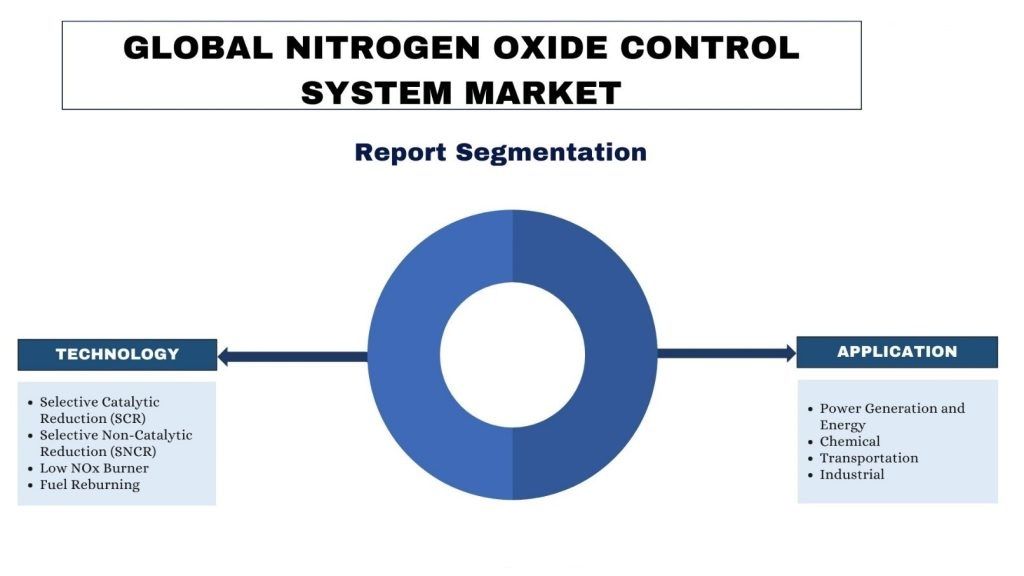
Тенденции рынка систем контроля оксидов азота
В этом разделе рассматриваются ключевые тенденции рынка, которые влияют на различные сегменты рынка систем контроля оксидов азота, определенные нашей командой экспертов по исследованиям.
Технология селективного каталитического восстановления (SCR) для систем контроля оксидов азота преобразует отрасль
Селективное каталитическое восстановление (SCR) выделяется как доминирующий сегмент с точки зрения доли рынка и широкого распространения. Контроль выбросов оксидов азота (NOx) из промышленных и коммунальных котельных является серьезной экологической проблемой. Были разработаны различные технологии для снижения NOx, в том числе селективное каталитическое восстановление (SCR), селективное некаталитическое восстановление (SNCR), горелки с низким содержанием NOx и переработка топлива. Среди этих технологий SCR в настоящее время занимает доминирующую долю на рынке систем контроля NOx. SCR может достигать эффективности снижения NOx до 90% или выше, что делает его наиболее эффективной технологией для соблюдения строгих правил выбросов. Кроме того, системы SCR обладают широкой применимостью и могут быть модернизированы для существующих котлов и других источников сгорания, а также интегрированы в новые установки в различных отраслях, таких как энергетика, цементная, химическая и нефтеперерабатывающая промышленность. Кроме того, системы SCR могут работать в широком диапазоне температур и нагрузок, обеспечивая гибкость в управлении выбросами NOx во время различных операционных сценариев. Эти и другие разработки демонстрируют важность систем контроля SCR NOx на рынках, создавая благоприятный сценарий, поддерживающий траекторию его роста на протяжении всего прогнозируемого периода.
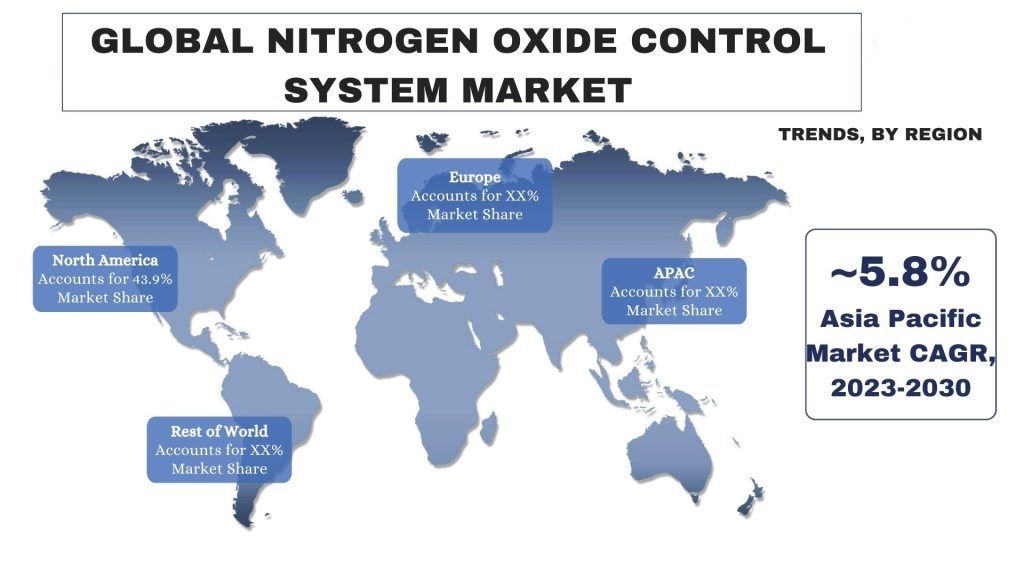
Азиатско-Тихоокеанский регион является самым быстрорастущим рынком систем контроля оксидов азота в мире.
В Северной Америке Китай занимает основную долю рынка. Основным фактором, стимулирующим рост рынка в стране, является растущее загрязнение воздуха от промышленности и транспорта, что приводит к многочисленным экологическим проблемам и проблемам со здоровьем.
В Азиатско-Тихоокеанском регионе наблюдается быстрый рост внедрения систем контроля оксидов азота (NOx) в различных отраслях промышленности. Этот широкомасштабный переход обусловлен несколькими факторами, вызванными ростом урбанизации, ростом спроса на электроэнергию и растущей обеспокоенностью по поводу воздействия выбросов на окружающую среду. Правительства стран Азиатско-Тихоокеанского региона все больше осознают важность решения проблемы изменения климата и сокращения выбросов парниковых газов. Несколько стран внедрили политику и инициативы, направленные на содействие внедрению экологически чистых технологий, включая системы контроля NOx. Например, Министерство экономики, торговли и промышленности Японии (METI) ввело различные субсидии и налоговые льготы для отраслей, внедряющих технологии контроля выбросов. Аналогичным образом, Программа развития технологий контроля выбросов в Южной Корее направлена на поддержку разработки и коммерциализации передовых систем контроля выбросов. Кроме того, в Азиатско-Тихоокеанском регионе наблюдается всплеск спроса на электроэнергию из-за быстрой индустриализации и роста населения. Например, по данным Международного энергетического агентства (МЭА), ожидается, что спрос на электроэнергию в регионе вырастет почти на 60% к 2040 году. Этот растущий спрос на электроэнергию в основном удовлетворяется за счет угольных и газовых электростанций, которые являются значительными источниками выбросов NOx. Чтобы смягчить воздействие этих электростанций на окружающую среду, страны региона предписывают установку систем контроля NOx. Например, Министерство окружающей среды, лесного хозяйства и изменения климата Индии установило строгие нормы выбросов NOx для тепловых электростанций, стимулируя внедрение систем селективного каталитического восстановления (SCR) и селективного некаталитического восстановления (SNCR). Подобные факторы создают благоприятные попутные ветры, поддерживая траекторию роста системы контроля NOx в Азиатско-Тихоокеанском регионе на протяжении всего прогнозируемого периода.
Обзор отрасли систем контроля оксидов азота
Рынок систем контроля оксидов азота является конкурентным и фрагментированным, с присутствием нескольких глобальных и международных игроков рынка. Ключевые игроки применяют различные стратегии роста для расширения своего присутствия на рынке, такие как партнерства, соглашения, сотрудничество, запуск новых продуктов, географическое расширение, слияния и поглощения. К основным игрокам, работающим на рынке, относятся Honeywell International Inc.; CECO ENVIRONMENTAL; John Wood Group PLC; MITSUBISHI HEAVY INDUSTRIES, LTD.; DUCON Environmental; Babcock & Wilcox Enterprises, Inc; Siemens Energy; Phinia Inc.; Yara; и Spraying Systems Co.
Новости рынка систем контроля оксидов азота
- Например, в декабре 2022 года Агентство по охране окружающей среды США (EPA) ввело окончательное правило для контроля загрязнения воздуха новыми автотранспортными средствами в соответствии со стандартами для двигателей и транспортных средств большой грузоподъемности. Правило обновило процедуры тестирования, механизм соответствия и пределы выбросов NOx и других загрязняющих веществ из двигателей, используемых во внедорожных и большегрузных транспортных средствах. Новые стандарты направлены на снижение допустимых выбросов NOx на двигатель более чем на 82,5%, начиная с 2027 года.
- В ноябре 2022 года Европейская комиссия представила Европейскому парламенту нормы выбросов EURO 7, направленные на дальнейшее сокращение выбросов NOx и твердых частиц. Это новое предложение предполагает внедрение более передовых технологий, помимо селективного каталитического восстановления и дизельных сажевых фильтров, которые использовались в соответствии со стандартами EURO 6.
Охват отчета о рынке систем контроля оксидов азота
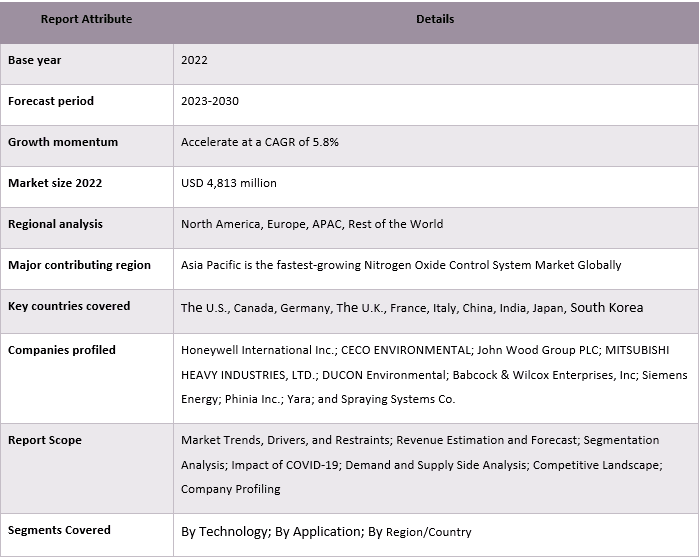
Причины купить этот отчет:
- Исследование включает анализ размера рынка и прогнозирования, подтвержденный аутентифицированными ключевыми экспертами отрасли.
- Отчет представляет краткий обзор общих показателей отрасли с первого взгляда.
- Отчет охватывает углубленный анализ видных представителей отрасли с основным вниманием к ключевым финансовым показателям бизнеса, портфелям продуктов, стратегиям расширения и последним разработкам.
- Подробное изучение движущих сил, ограничений, ключевых тенденций и возможностей, преобладающих в отрасли.
- Исследование всесторонне охватывает рынок по различным сегментам.
- Глубокий анализ отрасли на региональном уровне.
Варианты настройки:
Глобальный рынок систем контроля оксидов азота может быть дополнительно настроен в соответствии с требованиями или любым другим сегментом рынка. Кроме того, UMI понимает, что у вас могут быть свои собственные бизнес-потребности, поэтому не стесняйтесь обращаться к нам, чтобы получить отчет, который полностью соответствует вашим требованиям.

Вы также можете приобрести части этого отчета. Хотите ознакомиться с пораздельным
прайс-листом?
Содержание
Методология исследования анализа рынка систем контроля оксидов азота (2023-2030 гг.)
Анализ исторического рынка, оценка текущего рынка и прогнозирование будущего рынка глобального рынка систем контроля оксидов азота были тремя основными шагами, предпринятыми для создания и анализа внедрения систем контроля оксидов азота в основных регионах мира. Было проведено исчерпывающее вторичное исследование для сбора исторических данных о рынке и оценки текущего размера рынка. Во-вторых, для подтверждения этих выводов было принято во внимание множество результатов и предположений. Кроме того, были проведены исчерпывающие первичные интервью с отраслевыми экспертами по всей цепочке создания стоимости глобального рынка систем контроля оксидов азота. После принятия предположений и подтверждения рыночных данных посредством первичных интервью, мы использовали восходящий/нисходящий подход для прогнозирования полного размера рынка. После этого были приняты методы декомпозиции рынка и триангуляции данных для оценки и анализа размера рынка сегментов и подсегментов отрасли. Подробная методология объясняется ниже:
Анализ исторического размера рынка
Шаг 1: Углубленное изучение вторичных источников:
Было проведено подробное вторичное исследование для получения исторических данных о размере рынка систем контроля оксидов азота из внутренних источников компании, таких как годовые отчеты и финансовые отчеты, презентации о деятельности, пресс-релизы и т. д., и внешних источников, включая журналы, новости и статьи, правительственные публикации, публикации конкурентов, отраслевые отчеты, базы данных третьих сторон и другие надежные публикации.
Шаг 2: Сегментация рынка:
После получения исторических данных о размере рынка систем контроля оксидов азота мы провели подробный вторичный анализ для сбора исторических данных о рынке и долей различных сегментов и подсегментов для основных регионов. Основные сегменты, включенные в отчет, — это технологии и применение. Кроме того, был проведен анализ на уровне стран для оценки общего внедрения моделей тестирования в этом регионе.
Шаг 3: Факторный анализ:
После получения исторических данных о размере рынка различных сегментов и подсегментов мы провели подробный факторный анализ для оценки текущего размера рынка систем контроля оксидов азота. Кроме того, мы провели факторный анализ с использованием зависимых и независимых переменных, таких как технология и применение систем контроля оксидов азота. Был проведен тщательный анализ сценариев спроса и предложения с учетом ведущих партнерств, слияний и поглощений, расширения бизнеса и запуска продуктов в секторе рынка систем контроля оксидов азота по всему миру.
Оценка и прогноз текущего размера рынка
Определение текущего размера рынка: На основе практически полезных выводов, полученных в результате вышеуказанных 3 шагов, мы определили текущий размер рынка, ключевых игроков на глобальном рынке систем контроля оксидов азота и доли рынка сегментов. Все необходимые процентные доли разделения и разбивки рынка были определены с использованием вышеупомянутого вторичного подхода и были проверены посредством первичных интервью.
Оценка и прогнозирование: Для оценки и прогнозирования рынка различным факторам были присвоены веса, включая движущие силы и тенденции, ограничения и возможности, доступные для заинтересованных сторон. После анализа этих факторов были применены соответствующие методы прогнозирования, то есть восходящий/нисходящий подход, для получения прогноза рынка на 2030 год для различных сегментов и подсегментов на основных рынках мира. Методология исследования, принятая для оценки размера рынка, включает в себя:
- Размер рынка отрасли с точки зрения выручки (доллары США) и темпы внедрения систем контроля оксидов азота на основных рынках внутри страны
- Все процентные доли, разделения и разбивки сегментов и подсегментов рынка
- Ключевые игроки на глобальном рынке систем контроля оксидов азота с точки зрения предлагаемых продуктов. Кроме того, стратегии роста, принятые этими игроками для конкуренции на быстрорастущем рынке.
Подтверждение размера и доли рынка
Первичное исследование: Были проведены углубленные интервью с ключевыми лидерами мнений (KOL), включая руководителей высшего звена (CXO/вице-президенты, руководители отдела продаж, руководители отдела маркетинга, руководители операционного отдела, руководители регионального отдела, руководители страны и т. д.) в основных регионах. Затем были обобщены результаты первичных исследований и проведен статистический анализ для доказательства заявленной гипотезы. Данные первичных исследований были объединены с данными вторичных исследований, что превратило информацию в практически полезные выводы.
Разделение первичных участников по различным регионам
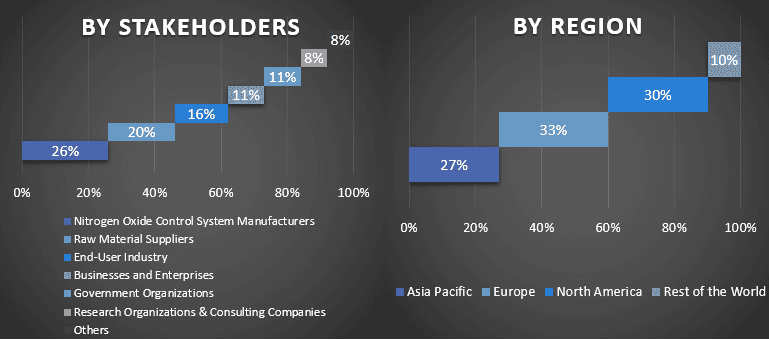
Инжиниринг рынка
Метод триангуляции данных был использован для завершения общей оценки рынка и получения точных статистических данных для каждого сегмента и подсегмента глобального рынка систем контроля оксидов азота. Данные были разделены на несколько сегментов и подсегментов после изучения различных параметров и тенденций в областях технологий и применения на глобальном рынке систем контроля оксидов азота.
Основная цель исследования глобального рынка систем контроля оксидов азота
В исследовании были точно определены текущие и будущие рыночные тенденции глобального рынка систем контроля оксидов азота. Инвесторы могут получить стратегические сведения, чтобы основывать свои решения для инвестиций на качественном и количественном анализе, выполненном в исследовании. Текущие и будущие рыночные тенденции определили общую привлекательность рынка на региональном уровне, предоставив промышленному участнику платформу для освоения неиспользованного рынка, чтобы извлечь выгоду из преимущества первопроходца. Другие количественные цели исследований включают:
- Проанализировать текущий и прогнозируемый размер рынка систем контроля оксидов азота с точки зрения стоимости (доллары США). Кроме того, проанализировать текущий и прогнозируемый размер рынка различных сегментов и подсегментов.
- Сегменты в исследовании включают области технологий и применения.
- Определить и проанализировать нормативно-правовую базу для систем контроля оксидов азота
- Проанализировать цепочку создания стоимости с участием различных посредников, а также проанализировать поведение клиентов и конкурентов в отрасли
- Проанализировать текущий и прогнозируемый размер рынка систем контроля оксидов азота для основного региона
- Основные страны регионов, изученные в отчете, включают Азиатско-Тихоокеанский регион, Европу, Северную Америку и остальной мир
- Профили компаний рынка систем контроля оксидов азота и стратегии роста, принятые участниками рынка для поддержания устойчивости на быстрорастущем рынке.
- Углубленный анализ отрасли на региональном уровне
Часто задаваемые вопросы Часто задаваемые вопросы
В1: Каков текущий размер рынка и потенциал роста глобального рынка систем контроля оксидов азота?
Q2: Каковы движущие факторы роста глобального рынка систем контроля оксидов азота?
Q3: Какой сегмент является самым быстрорастущим на мировом рынке систем контроля оксидов азота по типу продукта?
В4: Каковы новые технологии и тенденции на глобальном рынке систем контроля оксидов азота?
Q5: Какой регион будет самым быстрорастущим на глобальном рынке систем контроля оксидов азота?
Q6: Кто является ключевыми игроками на глобальном рынке систем контроля оксидов азота?
Связанные Отчеты
Клиенты, купившие этот товар, также купили




